Junjun Jiang
Semantics and Content Matter: Towards Multi-Prior Hierarchical Mamba for Image Deraining
Nov 17, 2025Abstract:Rain significantly degrades the performance of computer vision systems, particularly in applications like autonomous driving and video surveillance. While existing deraining methods have made considerable progress, they often struggle with fidelity of semantic and spatial details. To address these limitations, we propose the Multi-Prior Hierarchical Mamba (MPHM) network for image deraining. This novel architecture synergistically integrates macro-semantic textual priors (CLIP) for task-level semantic guidance and micro-structural visual priors (DINOv2) for scene-aware structural information. To alleviate potential conflicts between heterogeneous priors, we devise a progressive Priors Fusion Injection (PFI) that strategically injects complementary cues at different decoder levels. Meanwhile, we equip the backbone network with an elaborate Hierarchical Mamba Module (HMM) to facilitate robust feature representation, featuring a Fourier-enhanced dual-path design that concurrently addresses global context modeling and local detail recovery. Comprehensive experiments demonstrate MPHM's state-of-the-art performance, achieving a 0.57 dB PSNR gain on the Rain200H dataset while delivering superior generalization on real-world rainy scenarios.
Variation-Bounded Loss for Noise-Tolerant Learning
Nov 15, 2025Abstract:Mitigating the negative impact of noisy labels has been aperennial issue in supervised learning. Robust loss functions have emerged as a prevalent solution to this problem. In this work, we introduce the Variation Ratio as a novel property related to the robustness of loss functions, and propose a new family of robust loss functions, termed Variation-Bounded Loss (VBL), which is characterized by a bounded variation ratio. We provide theoretical analyses of the variation ratio, proving that a smaller variation ratio would lead to better robustness. Furthermore, we reveal that the variation ratio provides a feasible method to relax the symmetric condition and offers a more concise path to achieve the asymmetric condition. Based on the variation ratio, we reformulate several commonly used loss functions into a variation-bounded form for practical applications. Positive experiments on various datasets exhibit the effectiveness and flexibility of our approach.
Rethinking Autoregressive Models for Lossless Image Compression via Hierarchical Parallelism and Progressive Adaptation
Nov 14, 2025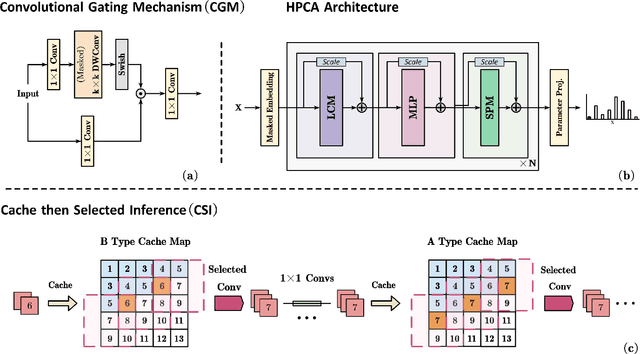
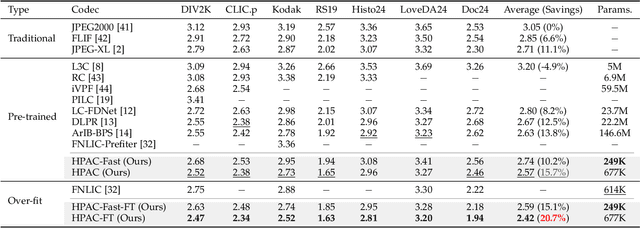
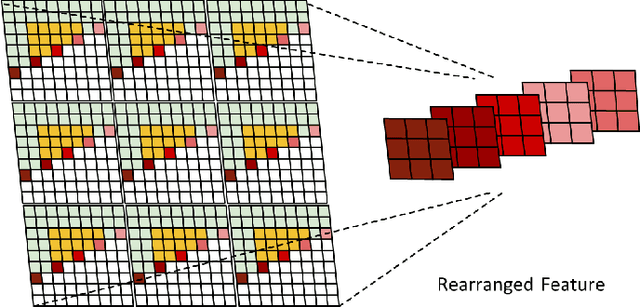
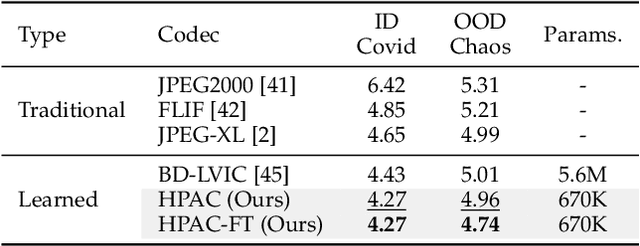
Abstract:Autoregressive (AR) models, the theoretical performance benchmark for learned lossless image compression, are often dismissed as impractical due to prohibitive computational cost. This work re-thinks this paradigm, introducing a framework built on hierarchical parallelism and progressive adaptation that re-establishes pure autoregression as a top-performing and practical solution. Our approach is embodied in the Hierarchical Parallel Autoregressive ConvNet (HPAC), an ultra-lightweight pre-trained model using a hierarchical factorized structure and content-aware convolutional gating to efficiently capture spatial dependencies. We introduce two key optimizations for practicality: Cache-then-Select Inference (CSI), which accelerates coding by eliminating redundant computations, and Adaptive Focus Coding (AFC), which efficiently extends the framework to high bit-depth images. Building on this efficient foundation, our progressive adaptation strategy is realized by Spatially-Aware Rate-Guided Progressive Fine-tuning (SARP-FT). This instance-level strategy fine-tunes the model for each test image by optimizing low-rank adapters on progressively larger, spatially-continuous regions selected via estimated information density. Experiments on diverse datasets (natural, satellite, medical) validate that our method achieves new state-of-the-art compression. Notably, our approach sets a new benchmark in learned lossless compression, showing a carefully designed AR framework can offer significant gains over existing methods with a small parameter count and competitive coding speeds.
AHDMIL: Asymmetric Hierarchical Distillation Multi-Instance Learning for Fast and Accurate Whole-Slide Image Classification
Aug 07, 2025Abstract:Although multi-instance learning (MIL) has succeeded in pathological image classification, it faces the challenge of high inference costs due to the need to process thousands of patches from each gigapixel whole slide image (WSI). To address this, we propose AHDMIL, an Asymmetric Hierarchical Distillation Multi-Instance Learning framework that enables fast and accurate classification by eliminating irrelevant patches through a two-step training process. AHDMIL comprises two key components: the Dynamic Multi-Instance Network (DMIN), which operates on high-resolution WSIs, and the Dual-Branch Lightweight Instance Pre-screening Network (DB-LIPN), which analyzes corresponding low-resolution counterparts. In the first step, self-distillation (SD), DMIN is trained for WSI classification while generating per-instance attention scores to identify irrelevant patches. These scores guide the second step, asymmetric distillation (AD), where DB-LIPN learns to predict the relevance of each low-resolution patch. The relevant patches predicted by DB-LIPN have spatial correspondence with patches in high-resolution WSIs, which are used for fine-tuning and efficient inference of DMIN. In addition, we design the first Chebyshev-polynomial-based Kolmogorov-Arnold (CKA) classifier in computational pathology, which improves classification performance through learnable activation layers. Extensive experiments on four public datasets demonstrate that AHDMIL consistently outperforms previous state-of-the-art methods in both classification performance and inference speed. For example, on the Camelyon16 dataset, it achieves a relative improvement of 5.3% in accuracy and accelerates inference by 1.2.times. Across all datasets, area under the curve (AUC), accuracy, f1 score, and brier score show consistent gains, with average inference speedups ranging from 1.2 to 2.1 times. The code is available.
Joint Asymmetric Loss for Learning with Noisy Labels
Jul 23, 2025Abstract:Learning with noisy labels is a crucial task for training accurate deep neural networks. To mitigate label noise, prior studies have proposed various robust loss functions, particularly symmetric losses. Nevertheless, symmetric losses usually suffer from the underfitting issue due to the overly strict constraint. To address this problem, the Active Passive Loss (APL) jointly optimizes an active and a passive loss to mutually enhance the overall fitting ability. Within APL, symmetric losses have been successfully extended, yielding advanced robust loss functions. Despite these advancements, emerging theoretical analyses indicate that asymmetric losses, a new class of robust loss functions, possess superior properties compared to symmetric losses. However, existing asymmetric losses are not compatible with advanced optimization frameworks such as APL, limiting their potential and applicability. Motivated by this theoretical gap and the prospect of asymmetric losses, we extend the asymmetric loss to the more complex passive loss scenario and propose the Asymetric Mean Square Error (AMSE), a novel asymmetric loss. We rigorously establish the necessary and sufficient condition under which AMSE satisfies the asymmetric condition. By substituting the traditional symmetric passive loss in APL with our proposed AMSE, we introduce a novel robust loss framework termed Joint Asymmetric Loss (JAL). Extensive experiments demonstrate the effectiveness of our method in mitigating label noise. Code available at: https://github.com/cswjl/joint-asymmetric-loss
NTIRE 2025 Challenge on HR Depth from Images of Specular and Transparent Surfaces
Jun 06, 2025Abstract:This paper reports on the NTIRE 2025 challenge on HR Depth From images of Specular and Transparent surfaces, held in conjunction with the New Trends in Image Restoration and Enhancement (NTIRE) workshop at CVPR 2025. This challenge aims to advance the research on depth estimation, specifically to address two of the main open issues in the field: high-resolution and non-Lambertian surfaces. The challenge proposes two tracks on stereo and single-image depth estimation, attracting about 177 registered participants. In the final testing stage, 4 and 4 participating teams submitted their models and fact sheets for the two tracks.
Boosting All-in-One Image Restoration via Self-Improved Privilege Learning
May 30, 2025Abstract:Unified image restoration models for diverse and mixed degradations often suffer from unstable optimization dynamics and inter-task conflicts. This paper introduces Self-Improved Privilege Learning (SIPL), a novel paradigm that overcomes these limitations by innovatively extending the utility of privileged information (PI) beyond training into the inference stage. Unlike conventional Privilege Learning, where ground-truth-derived guidance is typically discarded after training, SIPL empowers the model to leverage its own preliminary outputs as pseudo-privileged signals for iterative self-refinement at test time. Central to SIPL is Proxy Fusion, a lightweight module incorporating a learnable Privileged Dictionary. During training, this dictionary distills essential high-frequency and structural priors from privileged feature representations. Critically, at inference, the same learned dictionary then interacts with features derived from the model's initial restoration, facilitating a self-correction loop. SIPL can be seamlessly integrated into various backbone architectures, offering substantial performance improvements with minimal computational overhead. Extensive experiments demonstrate that SIPL significantly advances the state-of-the-art on diverse all-in-one image restoration benchmarks. For instance, when integrated with the PromptIR model, SIPL achieves remarkable PSNR improvements of +4.58 dB on composite degradation tasks and +1.28 dB on diverse five-task benchmarks, underscoring its effectiveness and broad applicability. Codes are available at our project page https://github.com/Aitical/SIPL.
Always Clear Depth: Robust Monocular Depth Estimation under Adverse Weather
May 18, 2025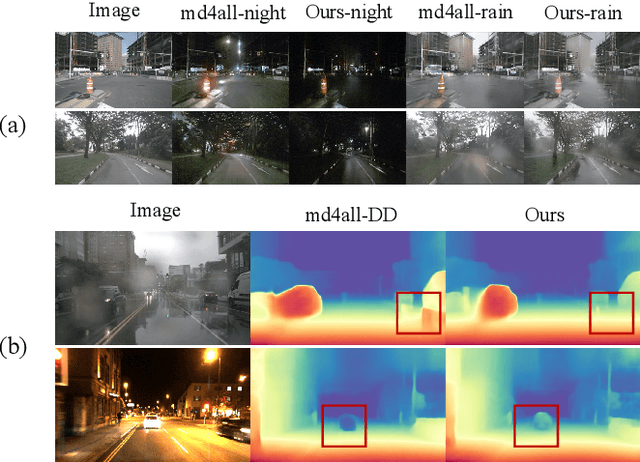

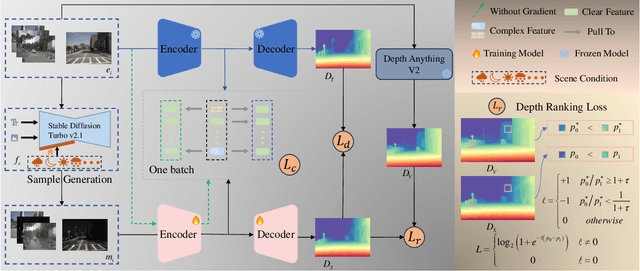

Abstract:Monocular depth estimation is critical for applications such as autonomous driving and scene reconstruction. While existing methods perform well under normal scenarios, their performance declines in adverse weather, due to challenging domain shifts and difficulties in extracting scene information. To address this issue, we present a robust monocular depth estimation method called \textbf{ACDepth} from the perspective of high-quality training data generation and domain adaptation. Specifically, we introduce a one-step diffusion model for generating samples that simulate adverse weather conditions, constructing a multi-tuple degradation dataset during training. To ensure the quality of the generated degradation samples, we employ LoRA adapters to fine-tune the generation weights of diffusion model. Additionally, we integrate circular consistency loss and adversarial training to guarantee the fidelity and naturalness of the scene contents. Furthermore, we elaborate on a multi-granularity knowledge distillation strategy (MKD) that encourages the student network to absorb knowledge from both the teacher model and pretrained Depth Anything V2. This strategy guides the student model in learning degradation-agnostic scene information from various degradation inputs. In particular, we introduce an ordinal guidance distillation mechanism (OGD) that encourages the network to focus on uncertain regions through differential ranking, leading to a more precise depth estimation. Experimental results demonstrate that our ACDepth surpasses md4all-DD by 2.50\% for night scene and 2.61\% for rainy scene on the nuScenes dataset in terms of the absRel metric.
RD-UIE: Relation-Driven State Space Modeling for Underwater Image Enhancement
May 02, 2025



Abstract:Underwater image enhancement (UIE) is a critical preprocessing step for marine vision applications, where wavelength-dependent attenuation causes severe content degradation and color distortion. While recent state space models like Mamba show potential for long-range dependency modeling, their unfolding operations and fixed scan paths on 1D sequences fail to adapt to local object semantics and global relation modeling, limiting their efficacy in complex underwater environments. To address this, we enhance conventional Mamba with the sorting-based scanning mechanism that dynamically reorders scanning sequences based on statistical distribution of spatial correlation of all pixels. In this way, it encourages the network to prioritize the most informative components--structural and semantic features. Upon building this mechanism, we devise a Visually Self-adaptive State Block (VSSB) that harmonizes dynamic sorting of Mamba with input-dependent dynamic convolution, enabling coherent integration of global context and local relational cues. This exquisite design helps eliminate global focus bias, especially for widely distributed contents, which greatly weakens the statistical frequency. For robust feature extraction and refinement, we design a cross-feature bridge (CFB) to adaptively fuse multi-scale representations. These efforts compose the novel relation-driven Mamba framework for effective UIE (RD-UIE). Extensive experiments on underwater enhancement benchmarks demonstrate RD-UIE outperforms the state-of-the-art approach WMamba in both quantitative metrics and visual fidelity, averagely achieving 0.55 dB performance gain on the three benchmarks. Our code is available at https://github.com/kkoucy/RD-UIE/tree/main
The Fourth Monocular Depth Estimation Challenge
Apr 24, 2025


Abstract:This paper presents the results of the fourth edition of the Monocular Depth Estimation Challenge (MDEC), which focuses on zero-shot generalization to the SYNS-Patches benchmark, a dataset featuring challenging environments in both natural and indoor settings. In this edition, we revised the evaluation protocol to use least-squares alignment with two degrees of freedom to support disparity and affine-invariant predictions. We also revised the baselines and included popular off-the-shelf methods: Depth Anything v2 and Marigold. The challenge received a total of 24 submissions that outperformed the baselines on the test set; 10 of these included a report describing their approach, with most leading methods relying on affine-invariant predictions. The challenge winners improved the 3D F-Score over the previous edition's best result, raising it from 22.58% to 23.05%.
 Add to Chrome
Add to Chrome Add to Firefox
Add to Firefox Add to Edge
Add to Edge